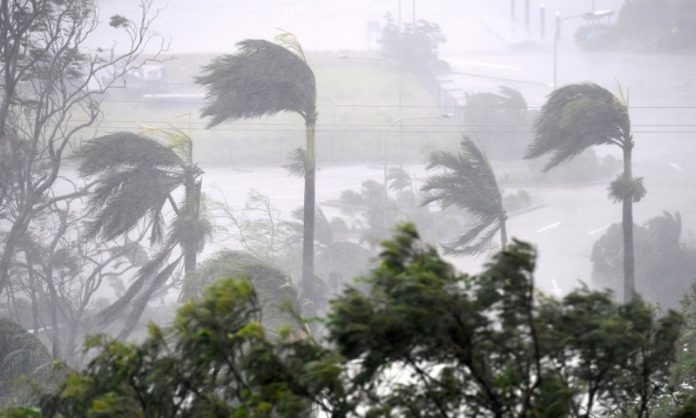PARIS: Scientists say the devastating intensity of hurricanes such as Harvey is consistent with global warming trends — rising seas, warming oceans, hotter air — and warn of “bigger and stronger” storms to come.
Here are their answers to questions about the link between climate change and the tropical storms known variously around the world as cyclones, hurricanes and typhoons.
Does warming bring more cyclone rain?
“The rarity of hurricanes, coupled with the difficulty of measuring rainfall, makes this highly problematic. Harvey’s rainfall near Houston is more like a thousand year event. But we expect hurricane rainfall to increase substantially this century as a consequence of warming oceans and atmosphere.” Kerry Emanuel, Professor of Atmospheric Science, MIT
“A logical consequence of global warming is a global increase of extreme rainfall events. In the case of Harvey, it is the heavy rain — and the resulting flooding — which is the greatest threat. A global increase of daily rainfall records is indeed seen in the rainfall observations. This trend will continue as long as we keep pushing up global temperatures by emitting greenhouse gases.” Stefan Rahmstorf, Co-chair, Potsdam Institute for Climate Impact Research
“When storms like this one move inland, they tend to die off. However, lingering near the coast, Hurricane Harvey maintained a healthy energy supply and has been able to continue picking up moisture and dumping it over land through sustained and intense rainfall.” Richard Allan, Professor of Climate Processes, University of Reading.
Is the poleward shift of cyclones significant?
“In the poleward migration we see a definite climate signal that matches our expectations… We think that as the century progresses, places that are on the poleward margins of hurricane zones (for example, Japan and New England) may experience more frequent and more intense hurricanes.” Kerry Emanuel
“The poleward drift — 53 kilometres (33 miles) per decade in the northern hemisphere, and 62 km (39 miles) in the southern — is highly relevant to society — arguably as much as changes in intensity. Places that are more accustomed to these storms and are better prepared for them may see less exposure, but places that are less well prepared may see more.” James Kossin, scientist, US National Oceanic and Atmospheric Administration’s Center for Weather and Climate.
Harvey: aberration or harbinger?
“The two most noteworthy aspects of Harvey are the rapid intensification — aided by the heat in the ocean, some of which is due to global warming — before landfall, and the stalling over land.” James Elsner, atmospheric scientist, Florida State University
“Harvey is unusual because it continued to strengthen in the Gulf of Mexico until it made landfall… It is also unusual because the swirling winds in a tropical cyclone usually bring up cooler waters from below, which makes a stationary tropical cyclone decay quite quickly — but this did not happen.” Brian Hoskins, Chair of the Grantham Institute for Climate Change at Imperial College London
“When we build a city or build a dam, we must understand and deal with possible vulnerability to flooding at that point… Hurricane Harvey, unfortunately, shows yet again how decades of development and politics, which do not factor in environmental extremes, then causes a disaster.” Dr Ilan Kelman, Institute for Risk and Disaster Reduction, University College London
Will cyclones change in the future?
“We expect that Category 3, 4, and 5 storms will become more frequent globally as the climate warms. But this will vary from place to place. Some places may even see a decrease.” Kerry Emmanuel
“The strongest hurricanes will get stronger as the seas continue to heat. Per-storm losses of life and property will rise. James Elsner
“Whether we can attribute Harvey to global warming — as with any individual weather event — is a questionable proposition. But it is very likely that many more storms like Harvey and Katrina and bigger ones yet are on the way.” Jeffrey Kargel, professor, University of Arizona





